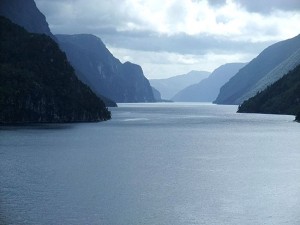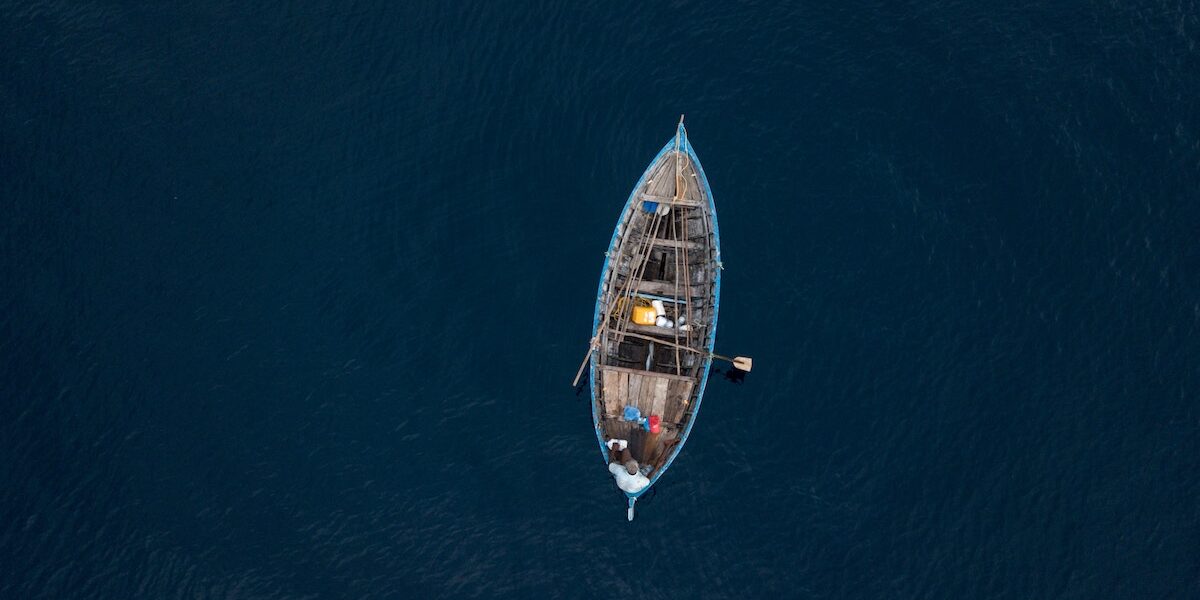
Research detectives have been at work at the Atlantic Salmon Federation (ASF), first developing the technology and then sleuthing the ocean to find out why significant numbers of migrating salmon leave rivers but so few return to spawn. Now this work is part of a documentary Atlantic Salmon – Lost at Sea, produced by the Emmy-winning Irish American film maker Deirdre Brennan of New York City and supported by The Ocean Foundation.
Ms. Brennan said, “I have gotten so close to the story of this magnificent fish, and met so many people in Europe and North America who are passionate about saving them. My hope is that our documentary, with its compelling underwater images and never-before-seen sequences, will help move millions of viewers to join the battle to save wild Atlantic salmon, wherever they swim.”
Part of the blue-ribbon cast are millions of juvenile salmon that live in North Atlantic rivers and migrate to distant water ocean feeding grounds. Unfortunately, ocean conditions over the past couple of decades are threatening the very survival of these salmon that are symbols of environmental health, first depicted on our planet in cave carvings 25,000 years ago. Researchers are learning as much as they can about Atlantic salmon and their migration so that policymakers can better manage fisheries. So far, ASF has learned about migration routes and bottlenecks by tagging these fish upriver with small sonic transmitters and tracking them downstream and through the ocean, using receivers anchored to the sea floor. These receivers pick up the signals of individual salmon and the data is then downloaded to computers as evidence in the overall investigation.
The Lost at Sea crew are finding out just how exciting and challenging it can be to follow the lives of wild Atlantic salmon. Their expeditions range from storm-tossed decks of the Irish research vessel, The Celtic Explorer to the cold, nutrient rich waters of Greenland, where salmon from many rivers in North America and southern Europe migrate to feed and over-winter. They have filmed glaciers, volcanoes and pristine salmon rivers in Iceland. The story of the ground-breaking acoustic and satellite technology that tracks salmon is set in breathtaking scenery along the mighty Miramichi and Grand Cascapedia rivers. The crew also filmed history in the making when the Great Works dam was removed in June on Maine’s Penobscot River, the first of three dam decommissions that will open up 1000 miles of river habitat to migrating fish.
Director of Photography for the North American part of the film is two-time Emmy award winner Rick Rosenthal, with credits that include the Blue Planet series and the feature films Deep Blue, A Turtle’s Journey and Disney’s Earth. His counterpart in Europe Cian de Buitlear filmed all the underwater sequences on Steven Spielberg’s Academy Award winning film (including Oscar for Best Photography) Saving Private Ryan.
The making of the documentary has taken over three years and it is expected to be broadcast in 2013. Among the North American sponsors of the film are The Ocean Foundation in Washington DC, the Atlantic Salmon Federation, the Miramichi Salmon Association and the Cascapedia Society.







